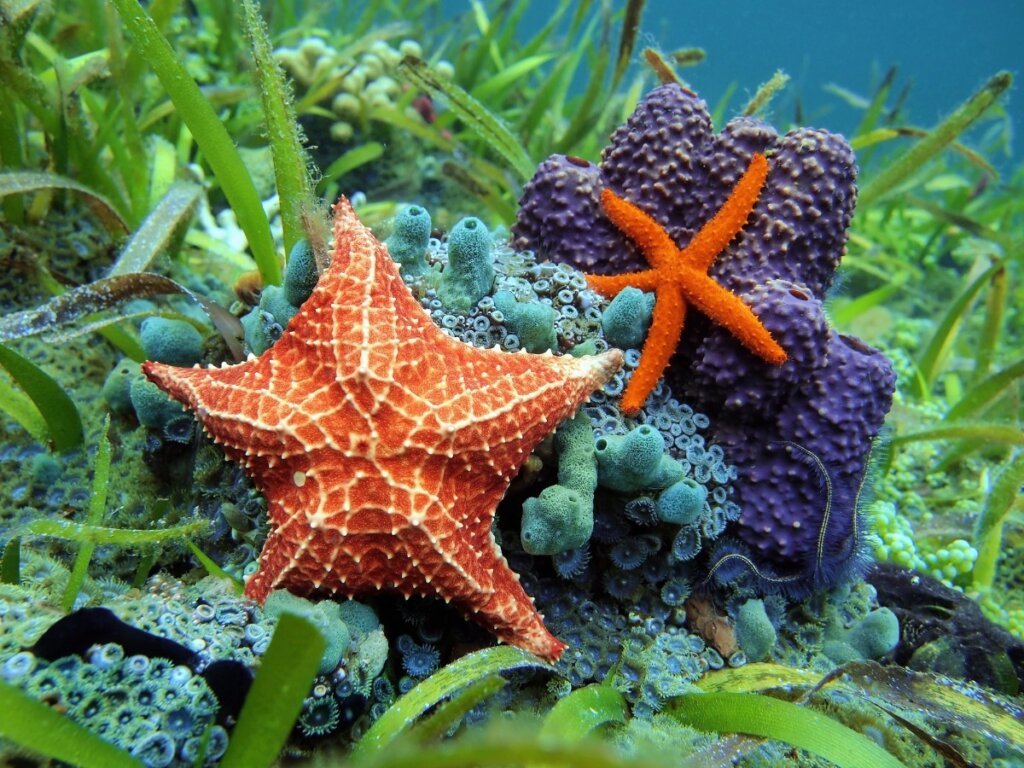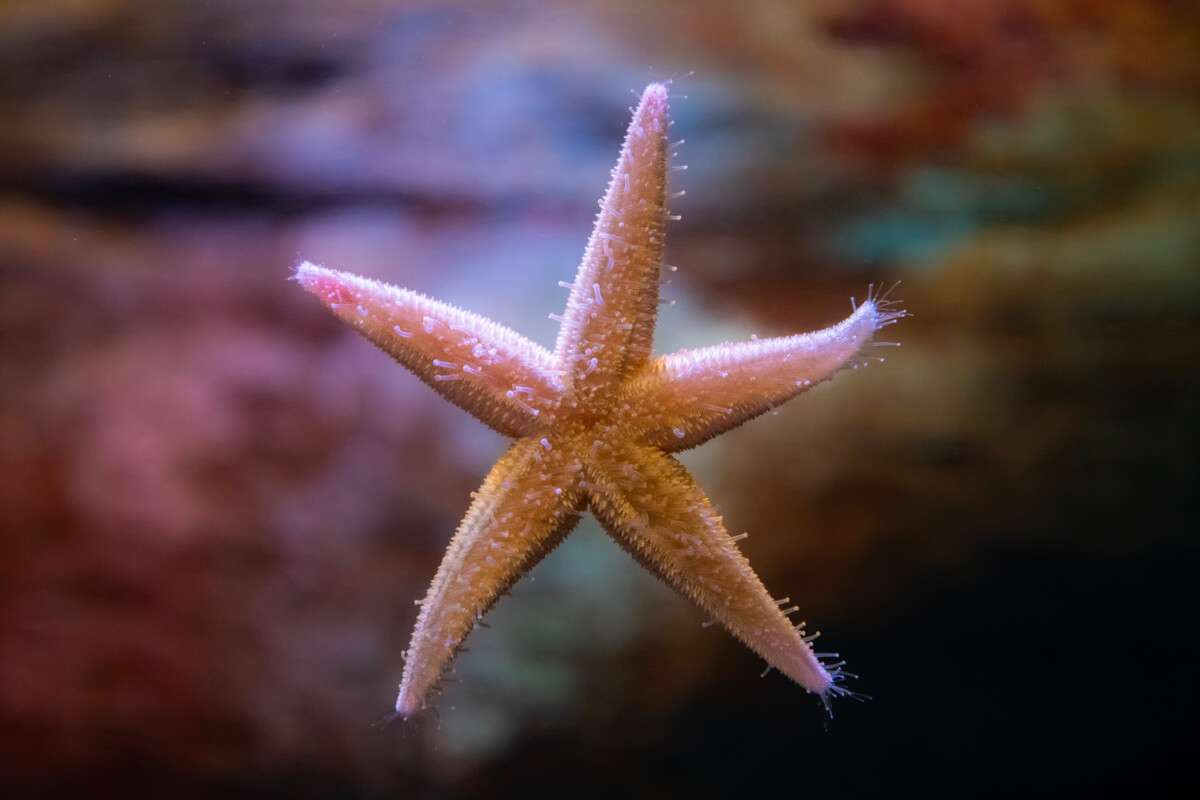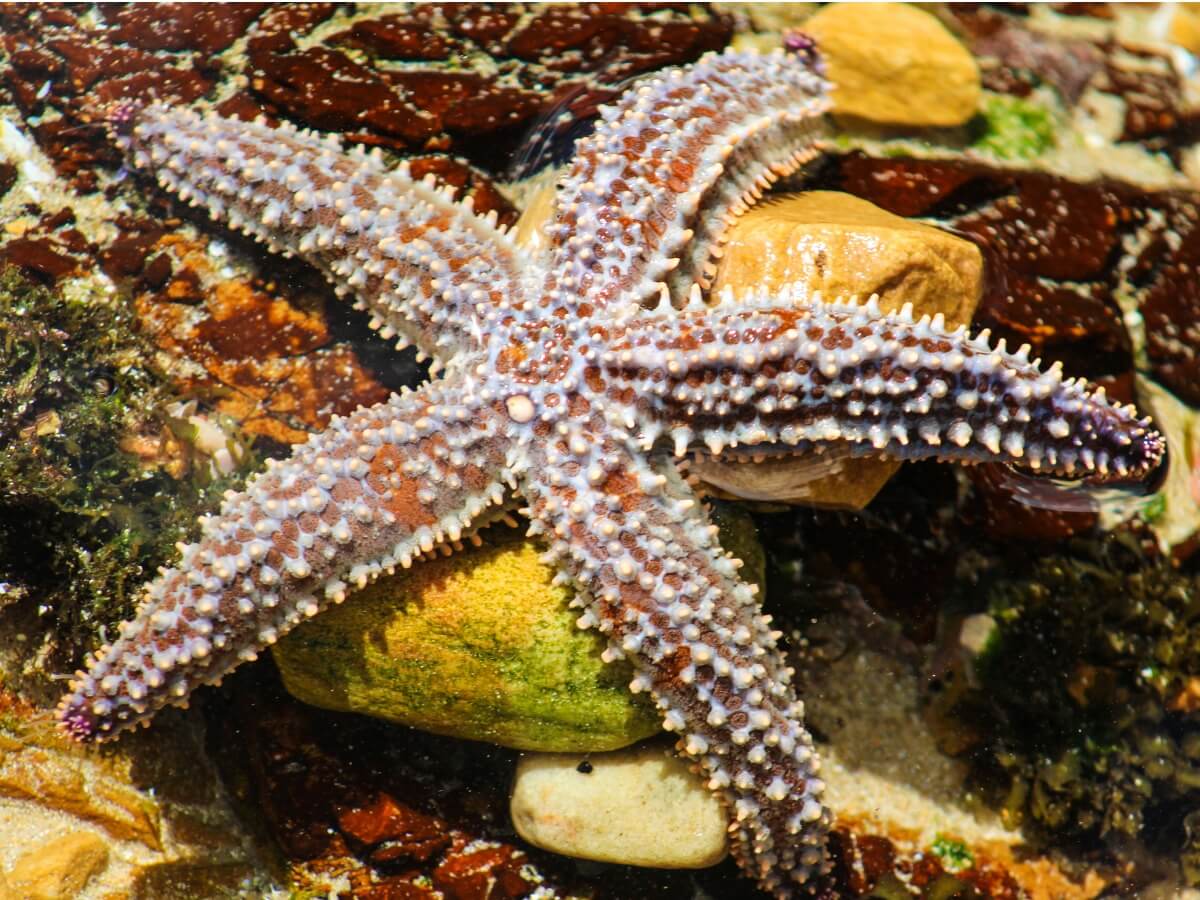What Do Starfish Eat?

Starfish, are famous all over the world, as many species are regularly observed when visiting the beach and taking a dip. However, beyond their relationship with seawater, the general population knows little about them. For example, would you have any idea what starfish eat?
Its alien appearance is disconcerting, as we can’t see any eyes, legs, or mouth anywhere when analyzing the body surface of a starfish. How is such an apparently archaic living being able to nourish itself? In the following lines, we’ll give you answers. Keep reading.
What are starfish?
Before answering the question of what starfish eat, we find it necessary to define them a bit at a taxonomic level. In the first place, it should be noted that all the marine invertebrates designated under this generic name are found in the Asteroidea class, and then in turn among the echinoderms. The group includes some 1500 different species, which inhabit the seas from the tropics to the polar waters.
Most starfish carry a common body plane: they have a central disk and 5 arms (although some species have many more). Its aboral (dorsal) section is usually spiny and hard, while the ventral side is softer and is characterized by the presence of multiple tube feet, essential for locomotion in echinoderms.
The sizes and colors of starfish are very varied, as is their diameter. Depending on the species, they can range from 2 centimeters just under an inch) to an extraordinary 1 meter (3.3 feet) and the tones can include black, yellow, purple, orange, red, blue, and many more colors. Without a doubt, the species with which the general society is most familiar is Asterias rubens.
Most starfish have 5 arms, but some species have up to 40.

What do starfish eat?
Now that we know a little more about these enigmatic invertebrates, we’re ready to answer the question about what starfish eat. Although peaceful in appearance and appear to lack a mouth, these animals are deceptive: most starfish are predators, feeding on sponges, bivalve mollusks, sea snails, and other small invertebrates.
Without a doubt, their method of feeding is alien to humans. Starfish have a mouth located ventrally in the center of the disk (not seen from above, but from below). It’s surrounded by a thick peristomial membrane and closed in by a muscular sphincter. This communicates directly with the esophagus, which empties into the stomach.
The most curious thing about these invertebrates is that their stomach is divided into 2 sections: the cardiac and the pyloric. The first one is reversible, so the starfish can “regurgitate” part of its stomach apparatus to the outside. This causes the release of digestive enzymes, so it begins to digest its prey alive in the aquatic environment itself.
Once the prey has died and has turned into a kind of mush, the cardiac stomach returns to its normal position and the food passes to the pyloric section. Thus, the starfish is able to eat live prey without having fangs, claws, or poisons to trap its victims. Incredible, but true! See it all happen in the video below!
A specific neuropeptide causes the stomach portion of the starfish to shrink and reverse itself.
The intricate hunting methods of the starfish
The nutritional task of starfish is quite complicated if we take into account that many of them prey on bivalve mollusks, such as mussels, cockles, and scallops. To combat the closed shells of these animals, some starfish use the unusual force of their tube feet and create a small opening. Then, they insert part of their stomach and release their enzymes, killing the prey.
Multiple studies have investigated starfish hunting techniques, specifically the relationship between Asterias rubens and its prey, the scallops. It has been observed that starfish tend to select small and medium-sized bivalves, since it’s easier for them to reach their shells without being perceived.
Starfish passively secrete compounds called saponins, and pectinid mollusks are able to detect them. So, when they notice these chemicals that show them that a starfish is approaching, they get into a “propulsion” position and escape. As a result of this interaction, the starfish can only select the slowest and smallest specimens.
The exceptions that confirm the rule
Although we’ve told you what starfish eat in general, it should be noted that not all species follow this rule. For example, the most primitive starfish (such as Astropecten) engulf their prey without chemically liquefying it and digest it entirely in the cardiac portion of the stomach.
There are detritivore species, which feed on the decomposing organic matter of the seabed, and other suspensivores, which ingest the phytoplankton that float in the water. Not all starfish are predators, but this is the feeding strategy acquired by the most well-known and abundant species.

Without a doubt, the question of what starfish eat has unraveled many more secrets than you could imagine. Not only are they generally predatory animals, but they use one of the most amazing hunting methods in the animal world – they regurgitate their own stomach and digest their victims alive! Nature will never cease to amaze us!
So, you’ve discovered how starfish eat! Interested in finding out more? Here’s a great article on how they breathe!
All cited sources were thoroughly reviewed by our team to ensure their quality, reliability, currency, and validity. The bibliography of this article was considered reliable and of academic or scientific accuracy.
- Asterias rubens, Animal Diversity Web. Recogido a 18 de agosto en https://animaldiversity.org/accounts/Asterias_rubens/
- Magnesen, T., & Redmond, K. J. (2012). Potential predation rates by the sea stars Asterias rubens and Marthasterias glacialis, on juvenile scallops, Pecten maximus, ready for sea ranching. Aquaculture international, 20(1), 189-199.
- Anderson, J. M. (1954). Studies on the cardiac stomach of the starfish, Asterias forbesi. The Biological Bulletin, 107(2), 157-173.
- Semmens, D. C., Dane, R. E., Pancholi, M. R., Slade, S. E., Scrivens, J. H., & Elphick, M. R. (2013). Discovery of a novel neurophysin-associated neuropeptide that triggers cardiac stomach contraction and retraction in starfish. Journal of Experimental Biology, 216(21), 4047-4053.
